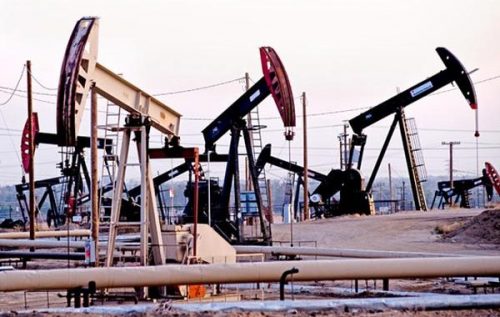
Azerbaijan produced 740,000 b/d of crude oil and 54,000 b/d of condensate, exported 629,600 b/d of crude oil, 54,000 b/d of condensate and 10,600 b/d of oil products in March 2018. According to Energy Ministry, average production by Azerbaijan made up 814,600 barrels of oil per day in January, 806,000 barrels in February in accordance with the agreement on keeping daily output at 834,000 barrels per day. Daily output was decreased by about 10.0 % in March compared with February 2018.
Meanwhile, 38.7 million tons of crude oil and 28.6 billion cubic meters of natural gas were produced in Azerbaijan in 2017, according to the State Oil Company of Azerbaijan Republic (SOCAR). The company produced 7.4 million tons of crude oil and 6.1 billion cubic meters of natural gas in the reporting period.
Since the country produced 41.0 million tons oil in 2016, Azerbaijani oil output declined by 5.7 % in 2017, compared to the previous year. In general, the oil output in Azerbaijan has declined since 2010, according to SOCAR’s figures. The oil output of Azerbaijan was 50.79 million tons in 2010, 45.62 million tons in 2011, 43.38 million tons in 2012, 43.48 million tons in 2013, 42.02 million tons in 2014, 41.58 million tons in 2015 and 41.03 million tons in 2016. Official figures confirm that Azerbaijani oil production declined by 24%, or 12.1 million tons, in 2017, compared to 2010.
CESD experts underline that there are some reasons behind Azerbaijan’s declining oil output. Firstly, oil reserves in Azerbaijan have declined over last decade. 440 million tons oil have been produced from the Azeri, Chirag fields and the Deep Water Portion of the Gunashli Field (ACG) in the Azerbaijan Sector of the Caspian Sea since 1994. Secondly, the Government of Azerbaijan has been trying to have a gradual decline in oil production in order to minimize the “sharp output decline” risk. Thirdly, maintenance work on oil platforms impacts oil volume, too. During the year, SOCAR conducted 138 thousand meters of drilling work. Of this amount, 93% fell to the share of development drilling and 7% to exploration drilling. Lastly, Azerbaijan has reduced daily oil output by 35000 barrel since 2016, based on the agreement between Azerbaijan and OPEC.
Meanwhile, CESD experts are alarmed by the fact that production costs for Azerbaijani crude oil have increased over the last decade. According to SOCAR reports, it costs 20.0 USD to produce a barrel. Based on cost and production volume, CESD does not expect that Azerbaijan will once again have a huge income from oil export. CESD forecasts that State Oil Fund of Azerbaijan (SOFAZ)’s annual income will be about 6.0-7.0 billion USD with barrel prices between 60-70 USD.
© CESD 2018